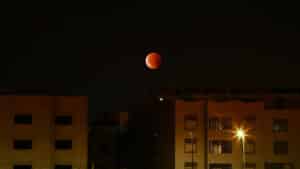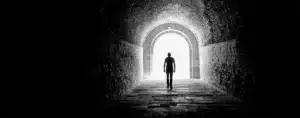And when the Lord your God brings you into the land that you are entering to take possession of it, you shall set the blessing on Mount Gerizim and the curse on Mount Ebal.
(Deuteronomy 11:29)
A few days ago, archaeologists Scott Stripling, Pieter van der Veen, and Gershon Galil held a press conference to announce an exciting discovery found on Mount Ebal.
“The new finding is a death blow to all Bible deniers,” said Professor Galil of the University of Haifa.
“Many Bible critics have claimed that in the thirteenth century BCE, the people of Israel did not read and write, and therefore could not have written the Bible,” explained Galil regarding the significance of written text from such an early date, adding: “Someone who knows how to write a text with a chiastic pattern can write anything”. 1 Now, Professor Galil might be overstating his case, indeed many experts remain dubious at this point, but the archaeologists are not holding back their enthusiasm about what they’ve found.
A small inscription on lead, thought to be 3,200 years old, appears to have the oldest script so far verifying biblical events. Not only was it on Mount Ebal near what is thought to be the altar of Joshua,2 but the text appears to be supporting the events that the Bible says happened on that spot:
That day Moses charged the people, saying, “When you have crossed over the Jordan, these shall stand on Mount Gerizim to bless the people: Simeon, Levi, Judah, Issachar, Joseph, and Benjamin. And these shall stand on Mount Ebal for the curse: Reuben, Gad, Asher, Zebulun, Dan, and Naphtali. And the Levites shall declare to all the men of Israel in a loud voice:
“‘Cursed be the man who makes a carved or cast metal image, an abomination to the Lord, a thing made by the hands of a craftsman, and sets it up in secret.’ And all the people shall answer and say, ‘Amen.’ “‘Cursed be anyone who dishonors his father or his mother, anyone who moves his neighbor’s landmark, anyone who misleads a blind man on the road, anyone who perverts the justice due to the sojourner, the fatherless, and the widow.’ And all the people shall say, ‘Amen.’
“‘Cursed be anyone who lies with his father’s wife, because he has uncovered his father’s nakedness, anyone who lies with any kind of animal, with his sister, whether the daughter of his father or the daughter of his mother, with his mother-in-law.’ And all the people shall say, ‘Amen.’
“‘Cursed be anyone who strikes down his neighbor in secret, anyone who takes a bribe to shed innocent blood… Cursed be anyone who does not confirm the words of this law by doing them.’
And all the people shall say, ‘Amen.’
(from Deuteronomy 27:11-24, shortened for sake of brevity)
The inscription reads, “Cursed, cursed, cursed – cursed by the God Yahweh. You will die cursed. Cursed you will surely die. Cursed by Yahweh – cursed, cursed, cursed.” As you can see, pretty much the theme of what happened there on Mount Ebal!
Moreover, the dating of the tablet challenges a lot of assumptions made about the time the Bible was written down. Rather than being recorded many centuries after the events described, it may be possible to prove ancient biblical texts were written at the time of the events themselves.
The archaeologists will submit their findings for peer review within the coming months, so at the moment many are waiting with bated breath before declaring it to be the significant archaeological discovery it is hoped to be.
Scott Stripling, Pieter van der Veen, and Prof. Galil claim to have found the earliest written example of God’s name, often expressed in English as “Yahweh”. The discovery could have huge implications on the accepted timeframe and veracity of biblical events, as well as providing evidence that the ancient Hebrews were literate much earlier than had been previously thought by many in the academic community.
Stripling announced, “We now have the name ‘Yahweh’, the biblical God of Israel, in an inscription dating from [Late Bronze Era II], which is earlier than many skeptics would argue that the Bible existed or that there was even the ability to write down a sacred text”.
- Prof. Galil in Yedioth Ahronoth, March 25, 2022; Israel Hayom, March 25, 2022
- The late Professor Adam Zertal who had conducted excavations on Mount Ebal in the 1980s wrote in his book A Nation Born:“My academic background made it difficult for me to accept the idea of Joshua’s altar being a tangible reality …. I had argued that the Bible was full of myths.” Yet he added, “If we have found material evidence of a story as early as Joshua’s, who knows how far back the archaeological record can take us.” It was Zertal’s wet sifting project which yielded the discovery of the curse tablet, seven years after his death.
The Armstrong Institute of Biblical Archaeology
















